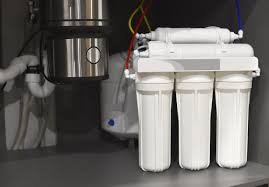
Clean water is essential for health and daily living. With growing concerns over water quality, many people seek reliable ways to purify their drinking water. Among various purification methods, reverse osmosis stands out as a highly effective solution. This article explores how choosing a reverse osmosis water system can improve the quality of your water and why it is a smart investment for your home.
Understanding Water Purification Challenges
Water from taps and wells often contains impurities like chlorine, heavy metals, bacteria, and sediments. Traditional filtration methods may reduce some contaminants but often miss the smaller, harmful particles. These impurities can affect taste, odor, and, most importantly, your health. With modern pollution and aging infrastructure, relying solely on municipal water treatment isn’t always enough. That’s where advanced purification technology becomes necessary.
The Role of a Reverse Osmosis Water System in Purifying Water
A reverse osmosis water system uses a semipermeable membrane to remove contaminants. This membrane filters out dissolved solids, chemicals, and microscopic organisms by pushing water through under pressure. Unlike basic filters, it captures impurities as tiny as 0.0001 microns. This technology ensures a higher purity level, delivering crisp, clean water that tastes fresh. The reverse osmosis water system stands out for its thorough purification capabilities and consistency in quality.
Benefits of Reverse Osmosis Over Traditional Filters
Traditional filters like activated carbon mainly improve taste and reduce chlorine but don’t eliminate all harmful substances. Reverse osmosis, on the other hand, targets a broad spectrum of contaminants, including lead, arsenic, fluoride, and nitrates. It also reduces sodium and dissolved solids, which many people don’t realize are common in tap water. This level of filtration makes reverse osmosis water systems a top choice for households concerned about safety and purity.
Installation Flexibility and Space Efficiency
Many worry that sophisticated water systems take up too much space or are difficult to install. Fortunately, modern reverse osmosis water systems come in compact designs that fit neatly under sinks or in utility rooms. Installation is relatively straightforward and can often be done by professionals within a few hours. The ease of installation and minimal space requirement make it accessible for most homes, enhancing water purification without hassle.
Maintenance and Cost-Effectiveness of Reverse Osmosis Water Systems
Maintenance for reverse osmosis water systems mainly involves periodic filter and membrane replacements. While these parts need regular attention, they are affordable and easy to replace. Over time, the system’s efficiency in reducing health risks and improving water taste justifies the maintenance effort. Compared to buying bottled water or dealing with health issues from poor water quality, investing in a reverse osmosis water system saves money and worry in the long run.
Environmental Impact and Sustainability Benefits
Choosing a reverse osmosis water system also helps reduce plastic waste. By providing purified water at home, it cuts down the need for bottled water, which contributes heavily to environmental pollution. This system supports sustainable living by offering a continuous supply of clean water with a lower carbon footprint. The environmental advantages add another important layer to why this purification method is increasingly preferred.
Conclusion
A reverse osmosis water system offers a reliable way to enhance water purification at home. Its advanced filtration removes a wide range of contaminants, providing safer and better-tasting water. The system’s compact design, manageable maintenance, and environmental benefits make it an excellent choice for anyone seeking cleaner water. Investing in a reverse osmosis water system means choosing health, convenience, and sustainability all at once.


![How to fix outlook [pii_email_6a61216eeba5eea68c5f] error](https://uptownstag.com/wp-content/uploads/2022/08/pii_email_7d02305c6f5561c22040-650x366.jpg)